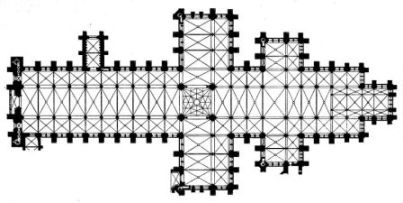Catholic church in middle ages
During the Middle Ages, Christianity and the Catholic Church were very important in Europe. The hub of town life was the nearby church. Every week, rituals were attended by people. At the church, they were married, baptized, and confirmed. The church even recognized monarchs as having the divine right to rule by confirming them on their thrones.

Rich and Powerful
Throughout the Middle Ages, the Catholic Church grew immensely wealthy and influential. Tithes, or tenth of an individual’s wages, were given to the church. They also covered the cost of the church’s numerous sacraments, including communion, marriage, and baptism. Additionally, penances were made to the church. Rich people frequently donated land to the church.
Eventually, a third or so of the land in Western Europe belonged to the church. The church was exempt from paying taxes to the king for its territory since it was seen as independent. The church’s leaders grew wealthy and influential. Numerous nobility went on to become church officials like bishops and abbots.
Structure of the Church
The pope served as the head of the Catholic Church. Below the pope were strong men known as cardinals. Bishops and abbots came next. Even bishops had a great deal of authority locally and frequently participated in the king’s council.
Cathedrals
During the Middle Ages, a lot of churches were constructed. These churches ranged in size from cathedrals to smaller ones. Bishops’ offices were located in cathedrals.
The purpose of building cathedrals was to awe. These were the most exquisite and costly structures ever constructed. A cathedral’s construction could occasionally take two centuries to complete.
The majority of cathedrals were constructed similarly. Usually, they were arranged in a cross pattern. Their ceilings and walls were exceedingly high.

Gothic Architecture
Gothic architecture is a new architectural style that started to be used in cathedral construction around the 12th century. The vaulted ceilings in this design were supported by buttresses rather than the walls. The walls could be taller and thinner in this fashion. Tall windows on the walls were also made possible by it.
Art
Some of the great art of the Middle Ages was produced in cathedrals. This included stained glass windows, sculpture, architecture, and painted murals.
Other Religions
There were various religions in Europe during the Middle Ages, despite Christianity being the predominant faith. Among these were paganisms, such the god Thor worshipped by the Vikings. Other religious communities included the Jews, who inhabited numerous European towns, and the Muslims, who for a long time controlled a large portion of Spain. Due to their ability to lend money and collect interest, Jews had a big impact on the economy.
Facts about the Catholic Church and Cathedrals
- Conversion of a country generally took place from the king down. Once the king was converted to Christianity, his nobles and people followed suit.
- Some master masons were able to work on a single cathedral for their entire life.
- Cathedrals and churches were often used for meeting places when a large location was needed.
- Catholic Bishops often sat on the king’s council.
- Churches provided education and looked after the poor and the sick.
- The main body of a cathedral is called the “nave”, the ends of the cross section are called the “transepts”, and the entrance is called the “narthex
Read also: Art and Literature in Middle Ages
 The First Encyclopedia Your First Knowledge Home
The First Encyclopedia Your First Knowledge Home
